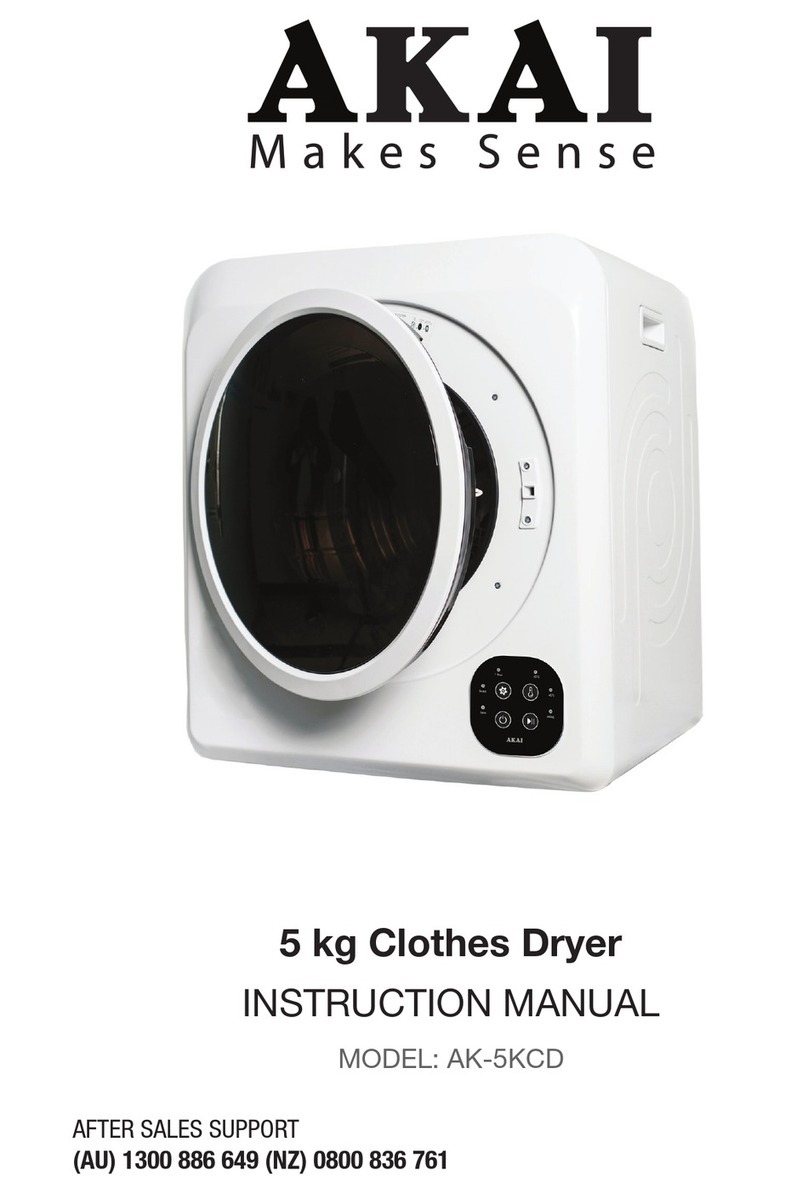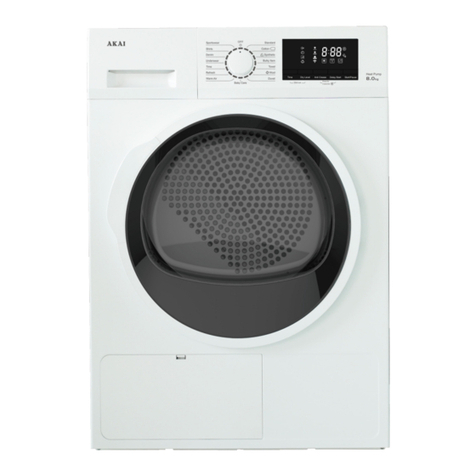
After Sales Support
(AU) 1300 886 649 (NZ) 0800 836 761 | tempo.org/support
4
General Safety Instructions (Cont.)
• Indoor use only: Do not use the appliance outdoors.
• Usage restriction: The appliance is not intended for use by persons (including
children) with reduced physical, sensory or mental capabilities, or lack of
experience and knowledge, unless they have been given supervision or instruction
concerning use of the appliance by a person responsible for their safety.
• Children: Supervise children to ensure they do not play with the dryer. Close
supervision is necessary when any appliance is used by or near children.
• Installation requirements: Do not install the appliance in a tight fitting cabinet. Do
not install it near heat sources such as radiators, heaters, air ducts or direct sunlight.
Place the clothes dryer on a flat, firm, dry and stable floor in a well ventilated area. Do
not place it on any soft material such as foam or plastic.
• Ventilation: The dryer has ventilation openings in the base. Ensure that vents are
not blocked or covered by newspapers, tablecloths, curtains, carpet, etc.
• Before use: Make sure to remove transport packaging at the rear of the dryer.
WARNING: Before loading the dryer, always ensure no pet or young child has
climbed into it. Do not overload the clothes dryer.
• Suitability for tumble drying: Only load suitable items into the clothes dryer. See
the box on the opposite page for which items and materials are unsuitable for the
clothes dryer and may present a fire risk.
• Preparation: Make sure all pockets of clothing to be dried are empty. Hard, sharp
objects such as coins, safety pins, bra wires, nails, screws, lighters or matches
must be removed as they can cause extensive damage to the dryer.
WARNING: Any damage or malfunction resulting from foreign objects is not
covered by your warranty and may lead to expensive repairs.
• No open flames: Do not place open flame sources such as candles on the dryer.
• Hot surface: Parts of the appliance may be hot after a long drying cycle. Always
ensure children are kept away from the machine. Do not store plastic, paper or
clothing that may burn or melt on top of the dryer during operation.
• Cool down: The final part of a clothes dryer cycle occurs without heat (cool down
cycle) to ensure that the items are left at a temperature that will not damage them.
WARNING: Never stop the clothes dryer before the end of the drying cycle unless
all items are removed quickly and spread out so the heat is dissipated.
• Subsequent cycles: After turning off the power supply to the clothes dryer, wait at
least two minutes before turning it back on again.
• Lint filter: WARNING! The lint filter must be in place when drying. It must be
cleaned before or after each use.
• Service/repair: Except for the filters that require cleaning, this appliance contains no
user-serviceable parts inside. Do not attempt to open, disassemble or repair it your-
self; only have it serviced by qualified personnel, call our after sales support centre.
The appliance should not be tilted or turned sideways during use or maintenance.





























